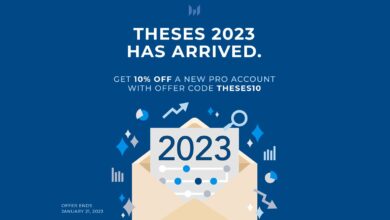Ask an Advisor: I’m 70 With $1.4 Million in IRAs. Should I Convert $160k Per Year into a Roth to Save on RMDs Later?
[ad_1]

I am 70 and I have $1.4 million in traditional IRAs. Is it best to do $160,000 in Roth conversions for the next 1-3 years to reduce my high RMDs in about 5-10 years? That would put me in the 24% tax bracket and $330 Medicare premium rate. Please give me advice.
– Dennis
I do think you’re on the right track to at least be considering this. There are plenty of good reasons that Roth conversions could make sense. As I’m sure you’re aware, a lot depends on the specifics of your circumstances and what your end goals are. I’ll go through some of the considerations here that will hopefully help you decide what is best for you.
Do you need additional help with decisions like Roth conversions? Speak with a financial advisor today.
When Do Roth Conversions Make Sense?
There are several reasons why a Roth conversion could make sense.
From a tax perspective, Roth conversions make sense when you believe you are in a lower marginal tax bracket now than you might be in later. Since the money will be taxed at some point, why not decide to do it when you’ll take the smallest tax hit?
Roth conversions also increase the control you have over your retirement savings since Roth IRA accounts aren’t subject to required minimum distributions (RMDs). This means it’s up to you to decide when you’ll withdraw money, based solely on your individual wants and needs.
Converting pre-tax accounts into Roth accounts may also make sense if you think you’ll end up leaving the money to heirs who are in a higher tax bracket than you. If they inherit a pre-tax account, they will have to withdraw the money and include it on their own tax return. By converting the money into Roth assets, you will increase the after-tax value of their inheritance. (A financial advisor can help you learn and decide on a Roth conversion.)
How to Decide

It sounds like you’re primarily thinking about the tax implications of Roth conversions, and possibly the flexibility that reduced RMDs may offer.
If so, I suggest estimating what you think your taxable income is going to be in a few years if you don’t do any Roth conversions. Then, compare it to what it might be if you do. This will require you to make some assumptions about the return you expect for your investments since your RMDs are a function of your age and account balances. You can then compare your tax liability now with what you think it might be in the future. When you do this comparison, you’ll also have to make some assumptions about future tax rates.
From a pure tax perspective, it would make sense to convert if you think paying 24% now will save you money over time. And yes, you are absolutely correct to consider ancillary effects like Medicare surcharges or changes to your combined income for Social Security taxation. (But if you need more help with your retirement income plan, consider matching with a financial advisor.)
Current Tax Rates vs. Future Tax Rates
Politicians decide tax laws, and I am the last person who would have you believe that I have any insight into what they may or may not do. I am also not in the business of predicting the future. However, my personal belief is that tax rates are likely to be higher in the future than they are today for a few reasons.
The simplest reason is the current tax law. The Tax Cuts and Jobs Act of 2017 (TCJA) is due to sunset at the end of 2025. Unless Congress extends provisions of the law, the personal federal income tax rates will return to pre-TCJA levels in 2026. This is simply the truth as we know it today. I personally use this as the baseline assumption when working through this decision with clients.
Then, there is logic. We are in a whole dadgum lot of debt as a country. We will eventually have to pay for that debt somehow. Couple that with the fact that our current income tax environment is very low compared to historical averages and it seems reasonable that we should expect taxes to go up in the future. (A financial advisor can help you interpret tax laws and how they could affect your retirement plans.)
Bottom Line

Roth conversions make sense if you believe you’ll save money by paying taxes now rather than later. They can also work if you want more control over your withdrawals or want to leave your heirs tax-free assets.
While you can’t predict future tax rates, you’ll have to make some assumptions about what your tax rate may be later on in order to calculate whether Roth conversions are viable. My personal belief is that tax rates will go up at some point, and using the expiration of the TCJA can be a baseline to start with.
Tips for Finding a Financial Advisor
-
Finding a financial advisor doesn’t have to be hard. SmartAsset’s free tool matches you with up to three vetted financial advisors who serve your area, and you can have free introductory calls with your advisor matches to decide which one you feel is right for you. If you’re ready to find an advisor who can help you achieve your financial goals, get started now.
-
Consider a few advisors before settling on one. It’s important to make sure you find someone you trust to manage your money. As you consider your options, these are the questions you should ask an advisor in an interview.
Brandon Renfro, CFP®, is a SmartAsset financial planning columnist and answers reader questions on personal finance and tax topics. Got a question you’d like answered? Email [email protected] and your question may be answered in a future column.
Please note that Brandon is not a participant in the SmartAdvisor Match platform, and he has been compensated for this article.
Photo credit: ©iStock.com/ijeab, ©iStock.com/AJ_Watt
The post Ask an Advisor: I’m 70 With $1.4 Million in IRAs. Should I Convert $160k Per Year into a Roth to Save on RMDs Later? appeared first on SmartReads by SmartAsset.
[ad_2]
Source link





